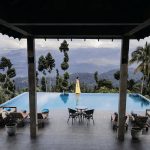I was born and raised in the Faroe Islands but have been living in 5 different countries for 20 years. I moved back to the Faroe Islands in 2012 to take the lead at Visit Faroe Islands. Prior to that, I was Marketing Director for Visit Stockholm and Marketing Manager for Visit Denmark.
Q2. What has living abroad taught you?
One thing that I learned all these years is that hard work will not go unnoticed. It always pays off in the most immense and rewarding way. There is no quick fix to success. Set high goals and work hard to achieve them. It’s all about the people. Get the right people on board and create the best possible work condition for them to be their best – and have fun while you are at it. I like the Nordic work environment and culture – low hierarchy, casual and everyone has trust in one another.
Q3. Tell us about the lifestyle of Faroese people?
The Faroese people lead a laid-back and stress-free lifestyle. There is a common saying among the islanders – “There is always tomorrow” or “Tað er altíð ein morgindagur” in Faroese language. They live on a philosophy that if you are not able to get something done today, don’t sweat about it, you can continue to pick up where you left off the next day.
Our diet is heavily influenced by the available resources on the islands. We eat a lot of lamb (there are around 80,000 sheep on the islands), fish and vegetables. Most of the people stay physically active and fit through walking in nature. Family is of great importance for Faroese people. People keep a close-knit family and spend quality time with their loved ones.
Q4. The best way to experience the Faroe Islands?
The best way would be to explore our stunning unspoiled nature. One can consider giving Heimablídni a try. Heimablídni is a concept of dining in the homes of the Faroese. The guests get to savor the authentic Faroese cuisine made by the locals such as soup cooked on lamb broth, dry-salted whale blubber, Faroese cod, homemade rhubarb juice etc.
Aside from the main island, there are some offshore islands worth visiting. These islands have become popular because of their unprecedented beauty. They are easily accessible and offers breathtaking views. Each island is unique and exclusive in its own way. Mykines, for example, has a big puffin colony, which isn’t the case for other islands. Most of these islands are sparsely inhabited and will immediately transport visitors into an otherworldly experience.
Q5. Your favorite Faroese food?
I love Faroese food! I particularly love fermented lamb, fish and a bird called Havhestur (Northern Fulmar) that is caught in late summer. The Faroese women are extremely adept at making desserts. Some of the desserts are made with rhubarbs, a plant that is very common here.
Q6. There are 50,000 people, with 80 different nationalities, making up the total population of the Faroe Islands. How does this diversity make Faroe Islands culturally unique?
I don’t think we are much different than other countries in this respect. Most countries have a multiracial population. Cultural diversity is important because it builds a bridge to new ideas and unique experiences. It also presents an opportunity for people to learn from one another. Bringing in different ideas and perspectives leads to better solutions to problems. Diversity opens dialogue and promotes creativity.
Q7. Tell us about the festivals in Faroe Islands?
Ólavsøka, our annual national holiday, is a wonderful time of year when people from all over the country flock to the capital to enjoy a plethora of exhibitions, great concerts, all sort of variety of food, exciting sporting events and more. Many would dress in the national costume to mark the day in a special way and add festive to the holiday.
Q8. Almost everywhere on the island is close to the ocean. What do you think are the advantages and disadvantages of living close to the sea?
It has its pros and cons. Fishing is the main industry in the Faroe Islands, so being close to the ocean certainly gives an edge to the local fishermen. There is something rejuvenating about fresh sea air that I love. But being close to the sea also means that you got to deal with the windy weather, which could be a downside at times.
Q9. Let’s talk about the sustainable development on the islands.
We are conscious of the impact of tourism might have on local communities. We created a tourism management strategy in 2019, outlining what type of tourism we wish to have and how we want to achieve our goals. Read here https://visitfaroeislands.com/join-the-preservolution/ to learn more about the strategy.






Leave a Reply